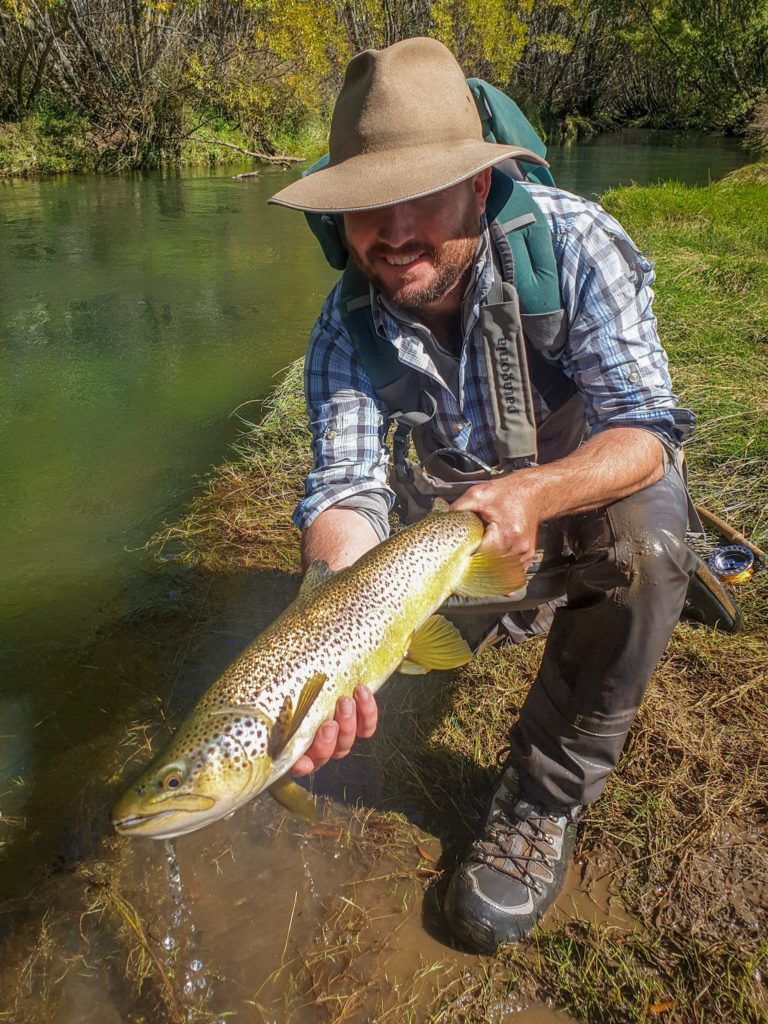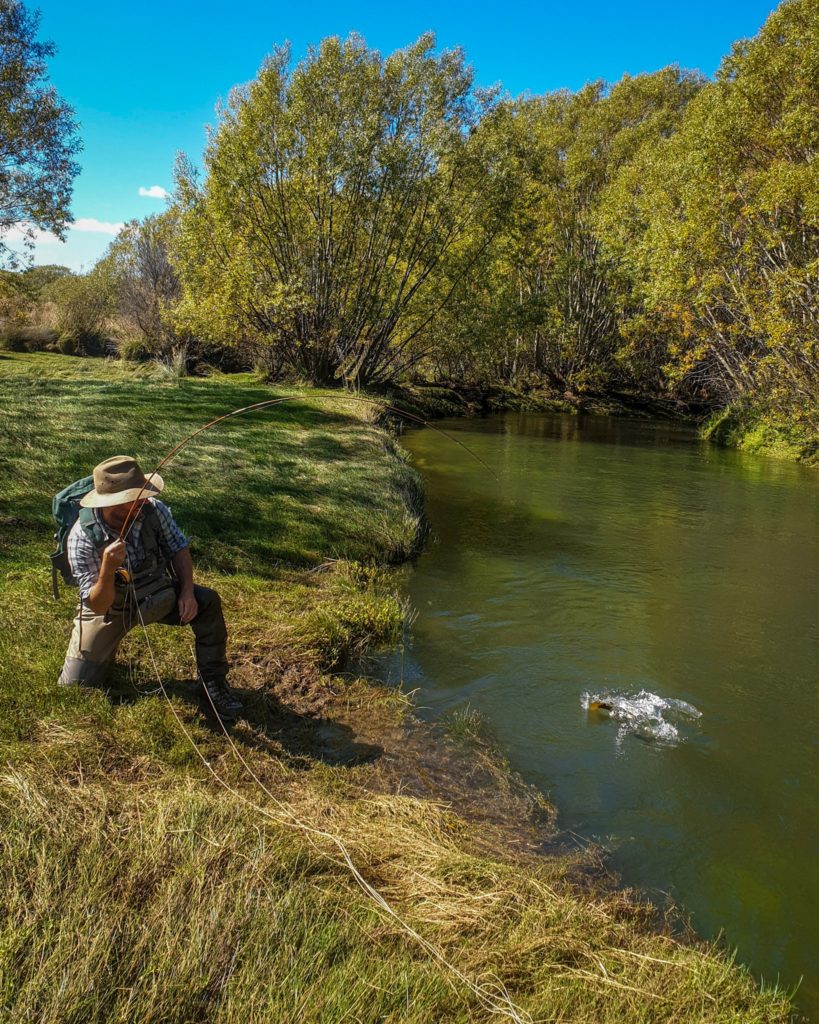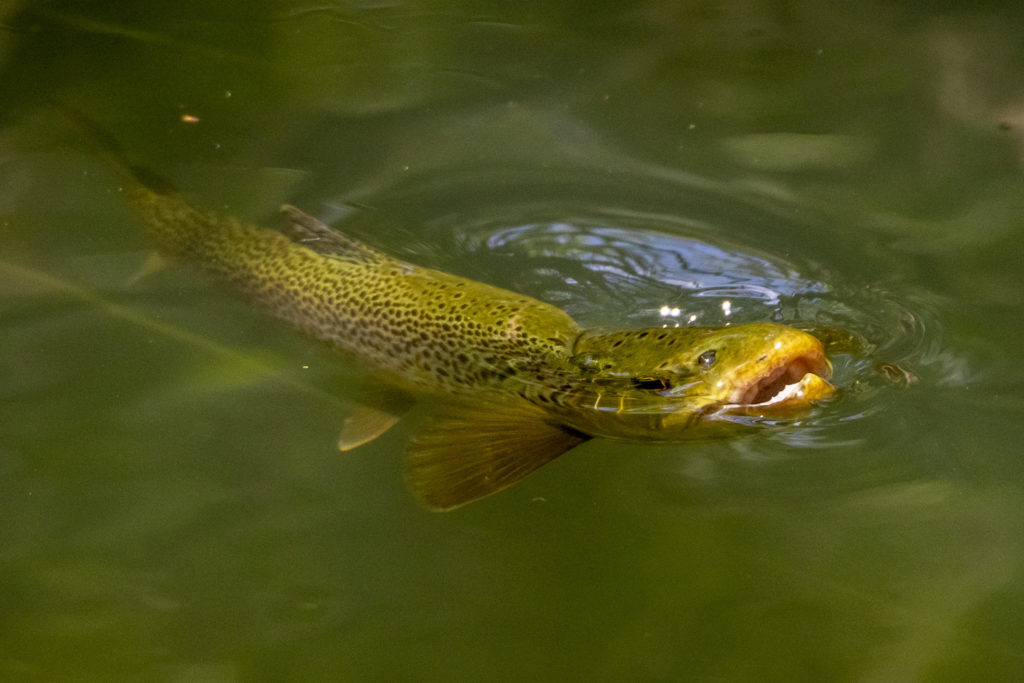
In 19 years of guiding there’s been a few memorable environmental bookmarks. These have included the Millennium drought where I remember guiding a whole season without a rain jacket, and more recently the introduction of environmental tailrace flows to many of our northern rivers (for the better!). None of these occurrences have had such an impact on the fishing as the introduction of the giant willow aphid Tuberolachnus salignus, producing some Tasmania’s best fishing hatches.
We first noticed aphid infestations in autumn 2014 on the Mersey River. The appearance of the insects along the river was obvious, with rusty stains from squished bugs evident across our waders, and the river rocks under infested trees were covered in secretions. By the following season it looked as if it was raining under infested trees. Our observations were matched by government entomologists, who first recorded the giant willow aphid along the South Esk at Longford, also in March 2014. Peer-reviewed papers have since found that the aphids arrived via New Zealand, on a particularly strong easterly wind current!

Moving on a number of years, and the giant willow aphid has developed into the most reliable hatch on Tasmania’s northern rivers. During hot and dry years we’ve fished aphid falls continuously from September till the end of April, while in cooler and wetter years we expect a later start, sometime in December right through till April. The falls themselves are consistent and resilient, with aphid infestations surviving submersion in the floods last March, and started right back again in April!
In terms of creating hatches, the critical life stage is the winged-adults, which are sipped off the water like ants. A good tree can form a feed line with rising fish for up to 200 metres. With a bit of experience the best trees and foamlines can be identified without much trouble, and these key tips are something that we are more than willing to pass on to our guided guests, along with fly selection and approaches. Our favourite aphid waters are the classic norther rivers: Meander, South Esk, St Patricks and Brumbys.
The consistent hatches have brought on bigger fish than pre-aphid averages, and a pleasant surprise has been the crossover between aphid and willow grub falls (we have two species of willow grubs in Tasmania). During a good hopper year (wet spring / dry and hot summer), the convergence of hoppers, aphids and grubs can lead to unbelievable fishing (as in autumn 2020).
If you like match the hatch sight fishing, then this is a hatch for you. Drop us an email if you would like to book in for a few days chasing willow aphid feeders with Daniel.

